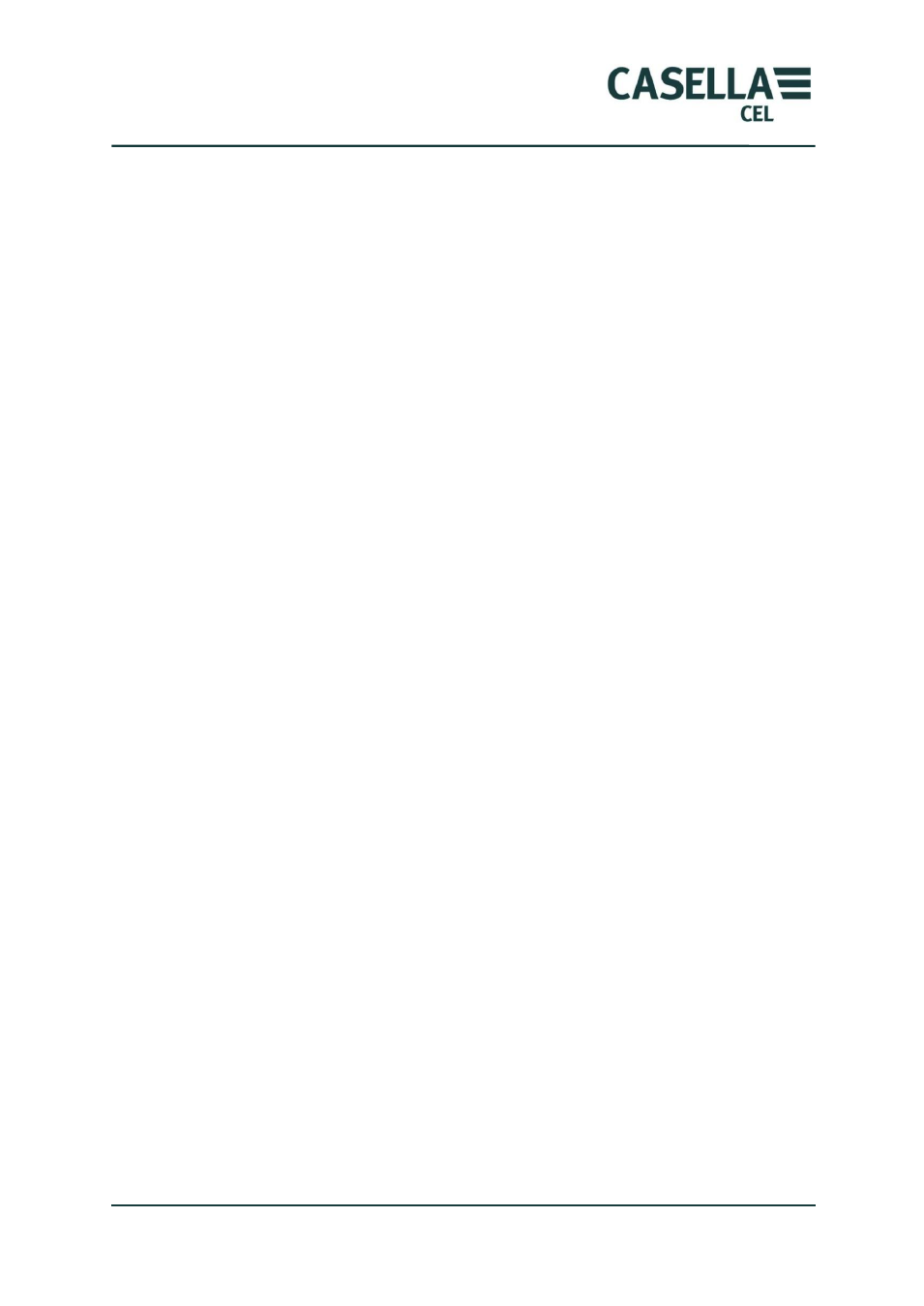Casella CEL CEL-63X User Manual
Page 73

CEL-63x Environmental & Occupational Noise Meter
73
Casella CEL
time constant to rising signals and a 1500 ms time
constant to decaying signals when calculating a sound
pressure level.
The Impulse Time Constant was traditionally used to
display an impulsive type noise, allowing the maximum
levels to be more easily seen on a changing display.
Impulsive measurements are identified by using the
subscript „I‟.
L
AE
A-weighted
exposure level
The level that would contain the same amount of energy
in one second as the actual noise has during the whole
measurement period.
L
Aeq
A-weighted
equivalent
continuous sound
energy level
(also L
Ceq
, L
Zeq
)
The A-weighted (also C-weighted, Z-weighted) steady
level that would contain the same amount of noise energy
as in the actual noise, effectively giving an average level
over the measurement period.
Following the ISO procedures, doubling the energy results
in a 3 dB change in the L
eq
. This is denoted by the
exchange rate Q=3.
Example
If the noise level in a factory were a constant 85 dB and
the measurement period were 4 hours, the L
Aeq
would be
85 dB(A).
The calculation of L
Aeq
does not use a threshold as in the
calculation of L
Avg
, except for the L
Aeq
(T80) function
defined for the ACGIH standard.
L
AF
(also L
AS
and L
AI
)
The A-weighted sound pressure level measured using fast
time weighting (also with Slow and Impulse time
weighting).
L
ASmax
(also L
AFmax
and L
AImax
)
The maximum A-weighted sound level measured using
slow time weighting (also with Fast and Impulse time
weighting).
L
Avg
Average sound
level
The average sound level over the measurement period is a
function used in OSHA measurements and is equivalent
to L
eq
.
Normally this term is used when the exchange rate Q is
some value other than 3, such as for measurements used
for the OSHA Hearing Conservation Amendment with
Q=5.
